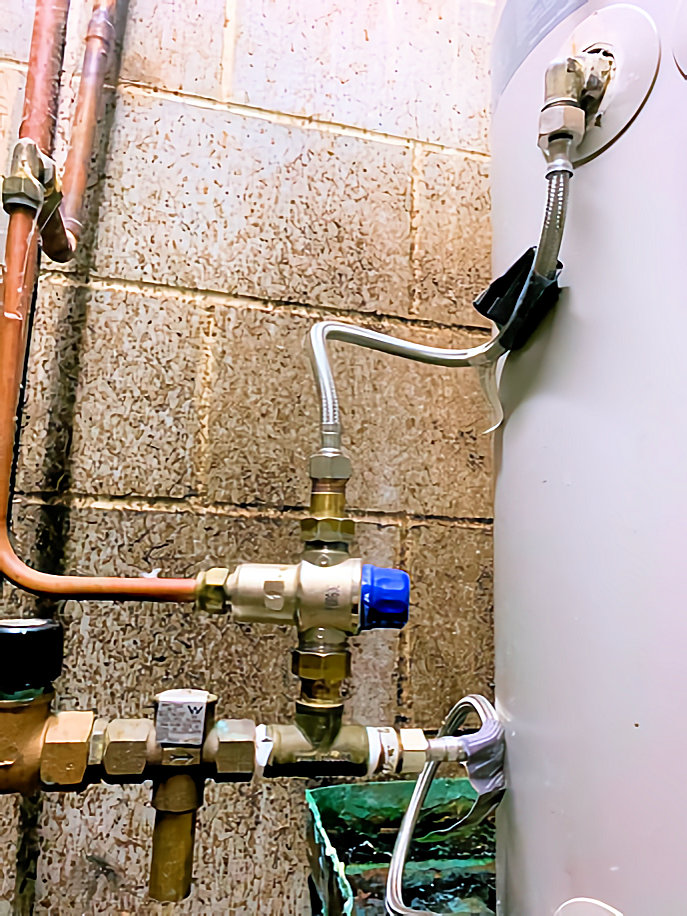
Stay Safe and Warm: The Hidden Dangers of Lowering Your Hot Water Temperature
Cold Weather Affects Your Hot Water Temperature Increasing Energy Consumption
Your hot water temperature in the shower increases as winter approaches and temperatures drop. Your hot water use increases proportionately to how cold the weather is. As a result, You will find yourself using hot water more frequently.
The surge in electricity and gas costs, driven by government policies on climate change, is adversely affecting household budgets. While conserving energy and reducing electric and gas utility bills is always a priority, being aware of the potential health risks associated with lowering your hot water temperature is essential.
Are you aware that the temperature of your hot water may significantly impact your health?
A recent article published by the Australian Building Codes Board (ABCB) highlights the dangers of reducing the temperature of the hot water in your home. The report confirms what plumbers are well aware of and that lowering the temperature can create the perfect breeding ground for harmful bacteria, such as Legionella, which can cause Legionnaires’ disease.
The Hidden Dangers of Legionella Bacteria
Lowering the temperature of your hot water system can create the perfect breeding ground for harmful bacteria, such as Legionella, which can cause Legionnaires’ disease—a severe form of pneumonia that can be life-threatening.
Legionella bacteria thrive in water temperatures between 20°C and 45°C, so setting your water temperature too low might inadvertently promote their growth.
Lowering the temperature of your hot water storage system can create the perfect breeding ground for harmful bacteria, such as Legionella, which can cause Legionnaires’ disease—a severe form of pneumonia that can be life-threatening.
Legionella bacteria thrive in temperatures between 20°C and 45°C, so setting your temperature too low might inadvertently promote their growth.
The Safe and Recommended Water Temperature
The Australian Building Codes Board (ABCB) recommends maintaining a hot water temperature of at least 60°C to prevent the growth of Legionella bacteria. This temperature effectively kills any bacteria present in the water.
Consider installing a tempering valve if you don’t already have one to avoid scalding risks. A tempering valve mixes cold water with hot water, reducing the temperature to a safe 50°C for household use. This ensures the safety and comfort of your family members, particularly young children and older adults who are more vulnerable to scalding.
Balancing Energy Efficiency and Safety
At Whywait Plumbing, your safety and well-being are our top priorities. So here are our three key recommendations to prevent Legionella growth in your hot water system:
-
Maintain a water temperature between 60°C and 65°C. Keeping your hot water system within this range will prevent the growth of harmful bacteria while ensuring your water is safe to use.
-
Schedule regular maintenance for your hot water system. This includes annual testing and certification of your tempering or thermostatic mixing valve, flushing the tank, and inspecting the temperature and pressure relief valve. Routine maintenance promotes optimal performance and reduces the risk of bacterial growth.
-
Install a tempering valve if you don’t have one. A tempering valve mixes cold water with hot water, delivering water at a safe temperature (usually around 50°C) to your taps and fixtures. This prevents scalding while maintaining the necessary temperature within the hot water system to kill harmful bacteria.
We understand many homeowners want to save energy and reduce their electric and gas utility bills by lowering their water temperature. However, it’s crucial to strike a balance between energy efficiency and the safety of your household. By maintaining a temperature of at least 60°C, you can effectively prevent the growth of harmful bacteria while still conserving energy.
Leave It to the Professionals
If you’re uncertain about the appropriate temperature setting for your hot water system or believe there might be a problem with your tempering valve, refrain from attempting any adjustments yourself. Unlicensed individuals tampering with hot water thermostat settings or tempering valve settings is illegal and not a DIY task, regardless of what someone at Bunnings might suggest. In addition, interfering with plumbing, electrical, or gas systems can put you and your family at risk and potentially void your insurance policies.
Our experienced team at Whywait Plumbing is ready to help you with all your hot water system needs, from inspections to maintenance and repairs, ensuring that your system operates safely and efficiently.
Health Comes First: Understanding the Significance of Water Temperature
It’s essential to be aware of the risks associated with lowering the temperature settings in your hot water system. Maintaining a temperature of at least 60°C can prevent the growth of Legionella bacteria, protecting your family from potential health hazards.
Don’t hesitate to contact Whywait Plumbing for expert advice and assistance in keeping your home safe and comfortable this winter.











